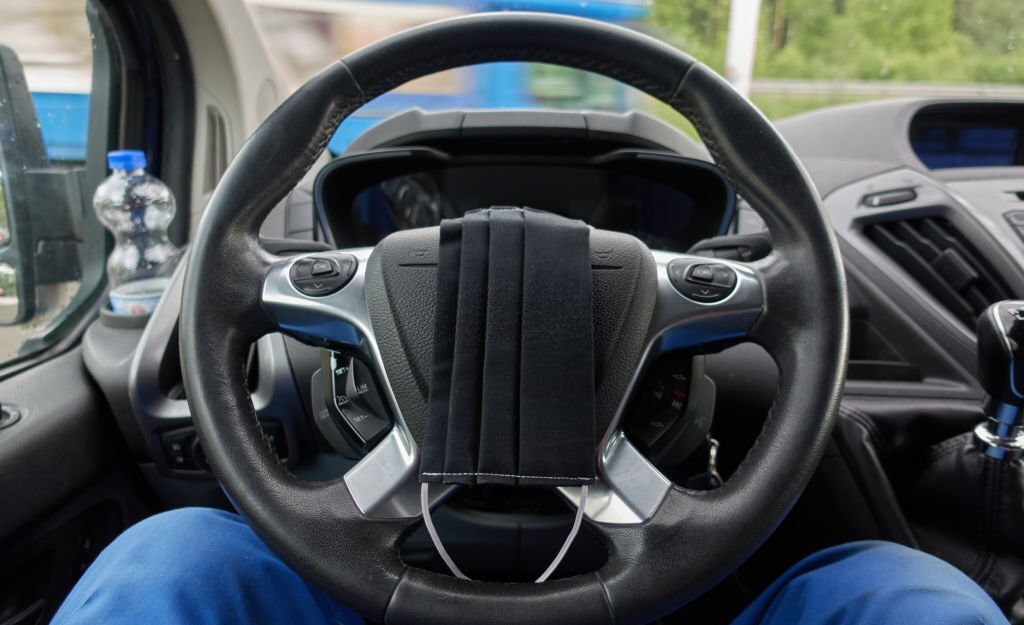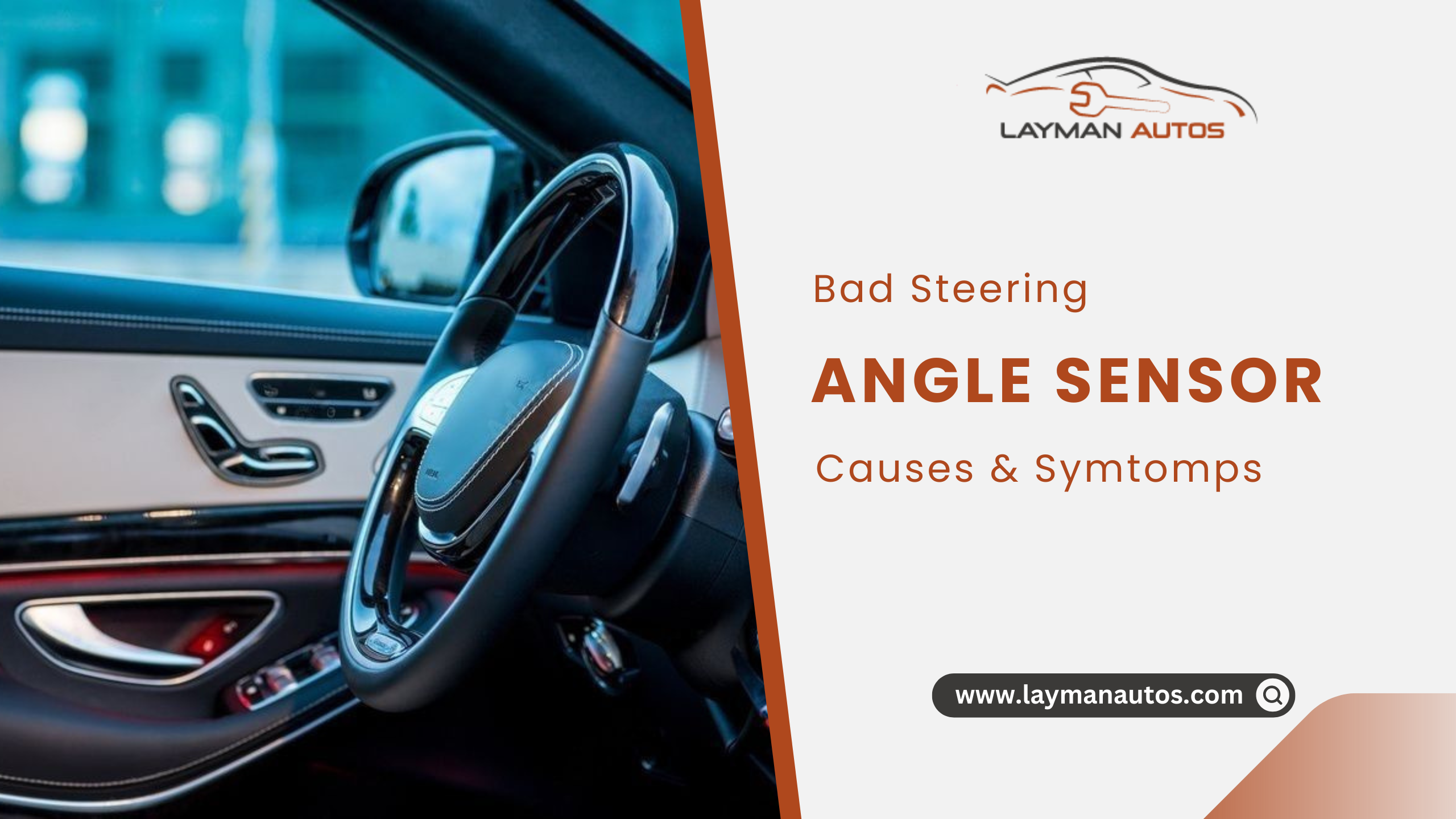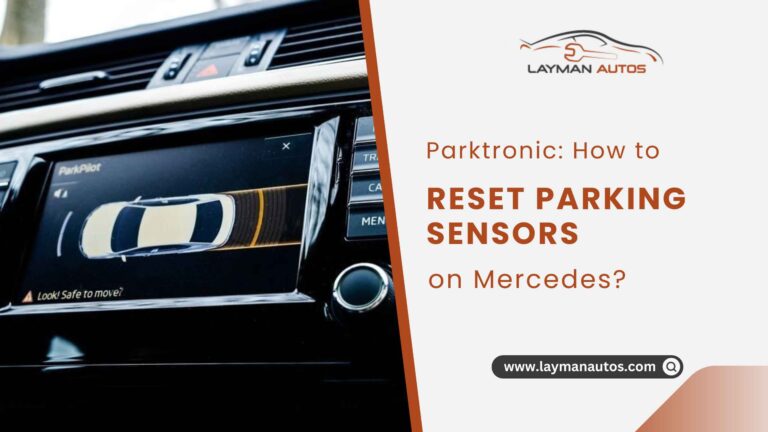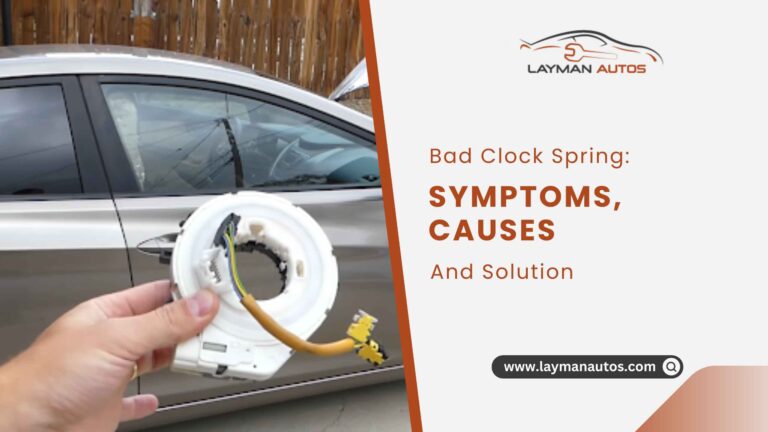Bad Steering Angle Sensor: Causes and Symptoms
Innovation in the automobile industry is mostly fueled by technological advancements. A driver’s aptitude and luck were the only factors that could determine whether or not an aggressive maneuver would avert a collision in the past. With the help of SEMA and SFI, automakers have developed better stability control systems in recent years. One such sensor is the steering angle sensor.
There are a plethora of sensors in today’s automobiles, all of which provide data to the vehicle’s central processing unit. An example of a crucial sensor for a car’s operation is the steering angle sensor.
What is a Steering Angle Sensor?
The electronic stability program would be incomplete without the steering angle sensor (ESP). AdvanceTrac w/Roll Stability Control (RSC), Dynamic Stability and Traction Control (DSTC), and Vehicle Stability Control are just a few of the common names for this high-tech safety feature, each of which is trademarked by a different automaker (VSC).
Each part of the system has a somewhat different name, but they all perform the same essential purpose. One of the sensors in the car is the steering angle sensor, which may be found in the steering column or near the front suspension.

As its name implies, the steering angle sensor is responsible for sensing the steering angle. Analog and digital steering angle sensors are the two most common varieties.
The two systems sense the steering angle in different ways. Using an LED light, the digital sensor—the most common type of sensor in vehicles—can determine the vehicle’s steering angle, turn rate, and other relevant data. The electronic control unit (ECU) receives this data from the sensor and responds by modifying the traction control settings.
In the past, this component was analogue and used to monitor voltage fluctuations caused by the steering wheel before sending that data to the vehicle’s electronic control unit (ECU). In today’s digital steering systems, the angle of the steering input is measured by an LED light.
How Does A Steering Angle Sensor Work?
Consequently, you may be wondering how these sensors function in practice. The steering angle sensor reads the angle of the steering wheel to ascertain the intended direction of the driver’s turn. The function of the sensor is to coordinate the movement of the steering wheel and the wheels so that the vehicle travels in the desired direction.
You need both the steering wheel and the wheels to turn in the same direction, of course. It would be impossible to achieve our goals if such were the case. The steering column houses these sensors. Multiple sensors for the steering angle are combined into a single device for maximum precision. More sensors mean more accurate data.
Having established their use, let’s go on to discuss the sensors’ operational details. To determine the directional and angular changes, these sensors employ voltage differences. They must receive accurate information regarding the angles. The manner in which your vehicle turns and the direction it turns in will be affected if something is wrong.
LED Light
How can one determine exactly what an angle is? An LED light indicates how far the steering input has been turned. The LED light will be read by a sensor, which will then transmit a signal to your car’s electronic dashboard. Your vehicle’s computer will then employ an algorithm to calculate the correct steering angle. The action is transmitted from the driver’s hands to the wheels.
Communicates Information
The steering angle sensor also communicates information to the car’s computer system concerning the rate of rotation of the steering wheel. How soon the angles need to be computed may be deduced from this. Take the situation of slowing down and making a right turn into consideration.
Even at these slow speeds, the driver is turning the wheel with relative rapidity. At greater speeds, though, the steering wheel won’t respond as rapidly to a turn of the wheel. At high speeds, the car’s computer system will interpret any attempt to turn the steering wheel as evidence of driver inattention or loss of control.
Torque Sensor
A steering torque sensor may be included in a vehicle with electric power steering. This sensor measures the force exerted by the driver on the wheel during a turn. As you crank the shaft of your steering wheel, this sensor will rotate somewhat. As the wheel is turned, the sensor gently rotates to keep up with the movement. It’s crucial that you know how these sensors function and why they’re so integral to your car’s steering wheel system.
Location of the Steering Angle Sensor
Most vehicles have the steering angle sensor positioned behind the wheel, wrapped around the column. Although it’s not common, some vehicles really do have it built into the steering column. There are two separate steering angle sensors in certain vehicles, so it’s crucial to get the proper one when it breaks.
In most vehicles, the steering wheel must be removed before the angle sensor may be viewed or accessed.
What Causes A Steering Angle Sensor To Go Bad?
The steering angle sensor, together with the vehicle’s traction and stability control, contributes to the vehicle’s safety mechanism. However, it is well known for its tendency to malfunction and activate the vehicle’s “check engine” warning light.

Unusual noises when turning the wheel, issues with the power steering, poor handling, and uneven tyre wear are all signs that it’s time to repair the steering angle sensor.
The SAS’s sensors can measure both the location and rotational velocity of the wheel. The ESC system takes this data into account when deciding how much help to provide the driver in maintaining vehicle stability to give.
It is possible for the ESC to malfunction if the SAS fails. At high speeds or on slick surfaces, this might cause the driver to lose control of the car. This is why it is so crucial to have a professional technician do periodic SAS checks.
All sorts of issues might arise if your car’s steering angle sensor is malfunctioning. The most typical problem is swerving or pulling to one side of the road. This occurs because the sensor is giving the vehicle’s central processing unit erroneous data regarding which way the steering wheel is being cranked.
Symptoms of Bad Steering Angle Sensor
The electronic stability control module receives information about the steering wheel’s location via the steering angle sensor. Difficulty turning, improper or unstable steering behavior, and activation of the electronic stability control system are just some of the issues that may arise if this sensor is malfunctioning.
In this section, we’ll discuss what happens when your steering angle sensor fails. The warning indicators should be our starting point.

When the steering angle sensor fails, the most typical symptom is a steering angle sensor warning light. There’s a check engine light or a traction control light, depending on the make and model of the vehicle. There can also be concerns with unusual or heavy steering following a wheel alignment, but these are far less common.
Constant usage can eventually degrade any sensor. It is generally accepted that all electronic parts have a finite lifespan. When a part reaches the end of its useful life, it becomes less effective. However, every malfunctioning component in a car emits signals that might serve as early warnings and motivate you to take immediate action.
The most typical indications of a failing steering angle sensor are listed below.
1. Warning Light for Engine Health
In older vehicles, there existed a sensor that could access the engine control unit (ECU). There are a wide variety of powertrain issues that might cause the check engine light to illuminate in your dashboard.
The steering angle sensor sends a signal to the engine control unit and the traction control system; if the signal is erroneous, the warning light will illuminate.
As a result, if you notice this warning symbol on your dashboard, it’s possible that your steering angle sensor is malfunctioning.
2. Traction Control Light comes on
In the event of an issue with the ECU’s electronic stability program, an error code is generated and recorded in the vehicle’s electronic control module (ECM). The Traction Control Light on the dashboard or in the instrument cluster will also come on at this point.
The airbag and anti-lock brake system (ABS) warning lights may also be on. Because the airbag is often wired to the steering angle sensor, if that part fails, so will the airbag.
This is the default setting and will not illuminate when traction control is activated; drivers must do so themselves. A warning light on the instrument panel will illuminate if the steering wheel angle sensor fails, letting the driver know that the ESC has been deactivated and has to be repaired. This cautionary indicator is the Traction Control Light on most newer automobiles, trucks, and SUVs, both American and imported.
An ASE-certified mechanic should be consulted whenever the Traction Control Light comes on while the system is engaged; they will be able to access the vehicle’s on-board diagnostics (OBD-II) system and read the error codes to figure out what’s wrong with the car and how it might affect the driver’s ability to safely operate the vehicle.
3. Turning the Steering Wheel Heavily
These days, power steering is almost always electronic. The steering angle must be measured so that the power steering pump may be activated at the appropriate time. This function is performed by the steering angle sensor.
It’s possible that the sensor misread the road conditions and transmitted false data to the car’s central processing unit, causing the computer to make unneeded corrections. It’s possible that the sensor has failed completely, cutting off all input to the ECU (which will cause the traction control light to come on) and rendering the power steering useless.
4. Steering wheel is loose and has “play”
The steering angle sensor’s primary function is to record driver input at the wheel, however, it has been shown to report erroneous data to the engine control module (ECM). If the sensor is broken, out of place, or otherwise compromised, it will provide erroneous data to the car’s central processing unit. Because of this, the ESP could make erroneous steering adjustments or inputs.
There will be a “loose” state in the steering wheel, where the amount of input you provide the wheel is not reflected in the vehicle’s response. If you find that your steering wheel is wobbly or that your car’s steering is not behaving as it should, you should have a professional technician check your ESP system immediately.
5. Car Acts Strange After Wheel Alignment
The same holds true for vehicles equipped with an electronic power steering pump, which is to say, virtually all current vehicles. A faulty steering angle sensor can cause erratic behavior and poor steering even after a wheel alignment.
The steering angle sensor must be reset when an alignment is performed. This issue may arise if your mechanic does not do this task. In this scenario, you should take your car back to the repair shop to have the alignment checked and the steering angle sensor reset.
Steering Angle Sensor Replacement Cost
Depending on the make and model of the vehicle, and the cost of labor, the price to replace the steering angle sensor can range from $150 to $500. A typical price range for the steering angle sensor is $120–$250, with steering angle sensor repair labor running an additional $80–$250.

First, you might be surprised to learn that the cost to replace anything varies quite a little. For both the component and the labor, there is no set rate. This occurs for a few different causes. To begin, your car’s make and model year might affect the cost of the component.
You should realize that in order to get this problem solved, you will need to hire a technician who has access to the appropriate diagnostic equipment. Calibration of the steering angle sensor is required after its replacement.
Some vehicles require the programming of a steering angle sensor that is built within the steering column control unit. On the other hand, this happens quite infrequently. If this is the case, however, the cost of its software development will skyrocket.
Final Words
When faced with symptoms of a bad steering angle sensor such as heavy steering, erratic behavior, or warning lights, it is essential to address the issue promptly. Using a scan tool, an auto repair professional can diagnose and reset the steering angle, ensuring the electric power steering functions properly. Additionally, calibration may be necessary to fix the problem caused by a failing steering angle sensor.
Frequently Asked Questions
When Is It Time to Replace My Steering Angle Sensor?
Typically, you should replace your SAS every two to four years according to manufacturer recommendations. However, if you notice any of the aforementioned issues with your vehicle, you should get your SAS examined as soon as possible by a professional mechanic.
How to test the steering angle sensor?
Like throttle position sensors, analog steering angle sensors (SAS) include a 5-volt reference, chassis ground, and signal output. It is necessary to back probe a connection located beneath the steering column in order to check the SAS.
LED light, a shutter wheel, and an optic sensor that reads the amount of light interruption make up a digital SAS. For these kinds of sensors, the output is a digital square-wave signal, whose amplitude may be evaluated with an oscilloscope.
When it comes to the steering angle sensor, how long can you expect it to last?
A steering angle sensor’s (SAS) lifetime is model- and vehicle-specific. Most manufacturers recommend replacing your SAS if you experience any of the symptoms discussed on this page, even though it can last the lifespan of the vehicle.






